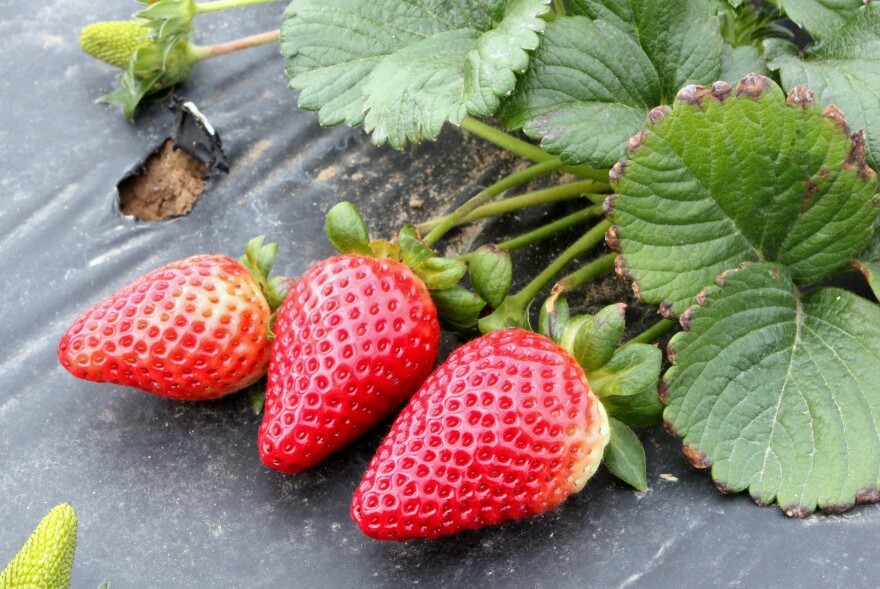In Texas, warm days in January and February have a lot of people wondering what happened to winter. The weather has made for a lot more nice days outdoors, but it’s having other impacts as well.
If you live in Austin you usually notice bats flitting around Lady Bird Lake in the summertime. But they’re out now. On warm nights you can see and hear them. If you stand close enough to their home under the Ann Richards Bridge, you also can smell them.
"Yes, we do have a kind of guano smell happening around us," laughs Micaela Jemison, standing by the north side of the bridge. Jemison is a bat researcher and spokesperson for Bat Conservation International.

"This end of the bridge is actually known to be where the males are, like a bachelor pad," she said. "So we might have a bunch of males kind of hanging out talking shop.”
Most people think that all of Austin's famed bats migrate to Mexico for the winter, but the group Jemison is referring to stays in Austin through the winter. People just usually don't notice them because they keep holed up when its cold. If it's warmer, like it has been this winter, they're more likely to take flight.
"We may be seeing the insect populations coming in, and thus the bats are hungry and eating them," Jemison speculates.
Bats aren't the only things taking advantage of a late winter snack. In the Hill Country town of Fredericksburg people are picking strawberries, thanks to a gamble made by a local farmer.
A few months ago Gary Marburger of Marburger Orchard decided he would start tending his pick-your-own strawberry crop earlier than usual. He was betting on a warmer winter, the results of that bet are three long blocks of ten thousand plants yielding juicy red berries.

“We’re seeing them much earlier this year than we ever have," says Marberger, standing among the rows. "Normally we would just now be getting started, and we already started a month ago this year.”
Meteorologists say the warmer winter is thanks to the El Nino weather pattern. But it may also be a sign of things to come as climate change continues.
“There’s actually quite a scientific literature, quite a few scientific studies where people have documented that things are happening earlier in the spring,” says Norma Fowler, a professor at UT Austin who researches plant biology.
Fowler says warming trends can lead to what is called a “mismatch,” when one species emerges at the wrong time and messes up the ecosystem.
Consider a caterpillar that emerges earlier than usual "because it's going by warmth,” says Fowler. If the tree it eats only grows leaves when the days get longer, the caterpillar has no food. That means the birds that eat the caterpillars are also in trouble.

“The bird babies don’t have enough food, because the caterpillars don’t get enough food, because the trees and the caterpillars are a mismatch,” she explains.
The warming trend also impacts agriculture. It makes it easier to grow crops that require warmer weather in some places that you couldn’t before, but it also makes growing other things harder. This was reflected in maps released by the USDA in 2012 that changed many "planting zones" to reflect average changes in climate.
Walking through his peach orchard, Gary Marberger says when he was starting out 35 years ago he used to plant a specific variety of peach tree that performs better when winter nights get colder.
“They did relatively well in those early years when I had the orchard at that time," he says. "But I would not even think about planting a variety of that kind nowadays.”
He says the winters just don’t get cold enough for those types of trees anymore.





